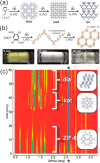Mechanochemistry: A Force of Synthesis
- PMID: 28149948
- PMCID: PMC5269651
- DOI: 10.1021/acscentsci.6b00277
Mechanochemistry: A Force of Synthesis
Abstract
The past decade has seen a reawakening of solid-state approaches to chemical synthesis, driven by the search for new, cleaner synthetic methodologies. Mechanochemistry, i.e., chemical transformations initiated or sustained by mechanical force, has been advancing particularly rapidly, from a laboratory curiosity to a widely applicable technique that not only enables a cleaner route to chemical transformations but offers completely new opportunities in making and screening for molecules and materials. This Outlook provides a brief overview of the recent achievements and opportunities created by mechanochemistry, including access to materials, molecular targets, and synthetic strategies that are hard or even impossible to access by conventional means.
Conflict of interest statement
The authors declare no competing financial interest.
Figures




References
-
- James S. L.; Adams C. J.; Bolm C.; Braga D.; Collier P.; Friščić T.; Grepioni F.; Harris K. D. M.; Hyett G.; Jones W.; Krebs A.; Mack J.; Maini L.; Orpen A. G.; Parkin I. P.; Shearouse W. C.; Steed J. W.; Waddell D. C. Mechanochemistry: opportunities for new and cleaner synthesis. Chem. Soc. Rev. 2012, 41, 413–447. 10.1039/C1CS15171A. - DOI - PubMed
Publication types
LinkOut - more resources
Full Text Sources
Other Literature Sources
Miscellaneous

